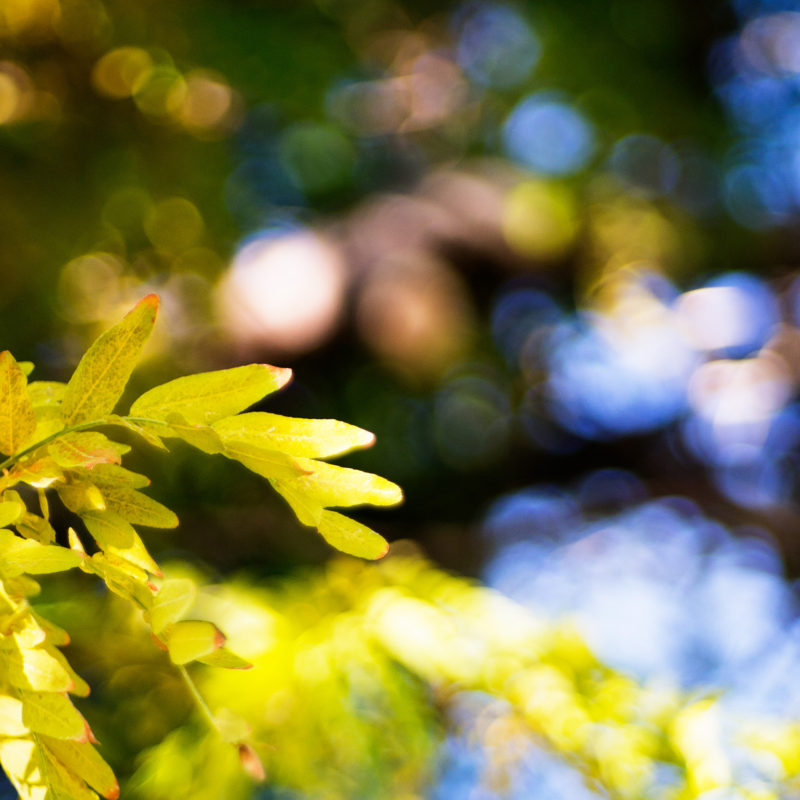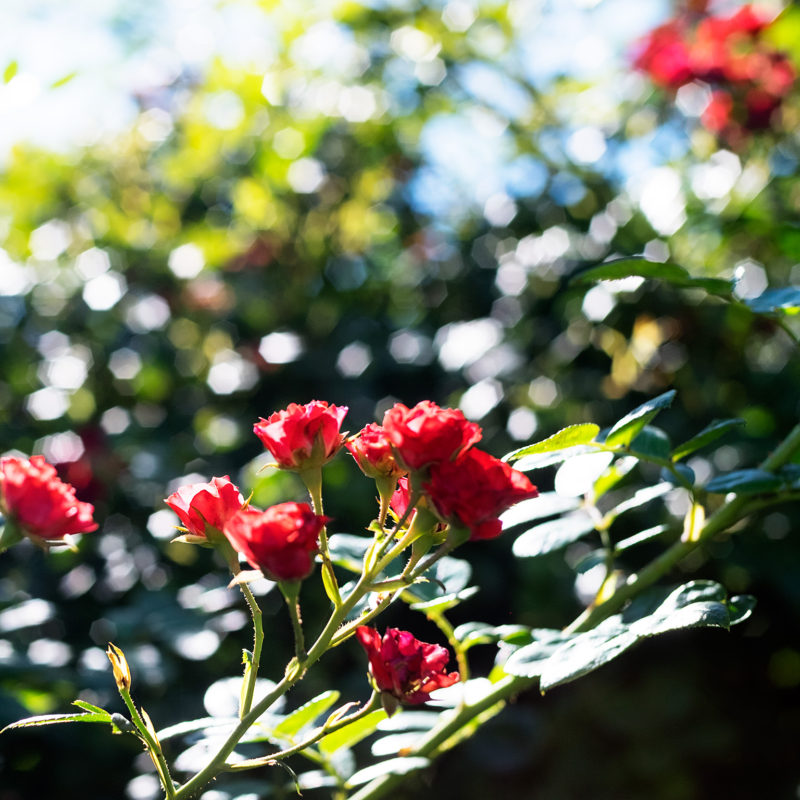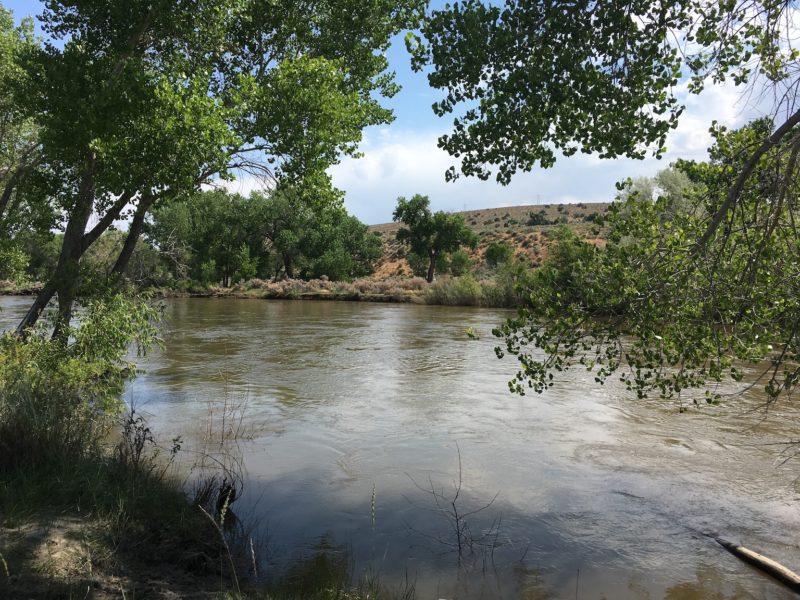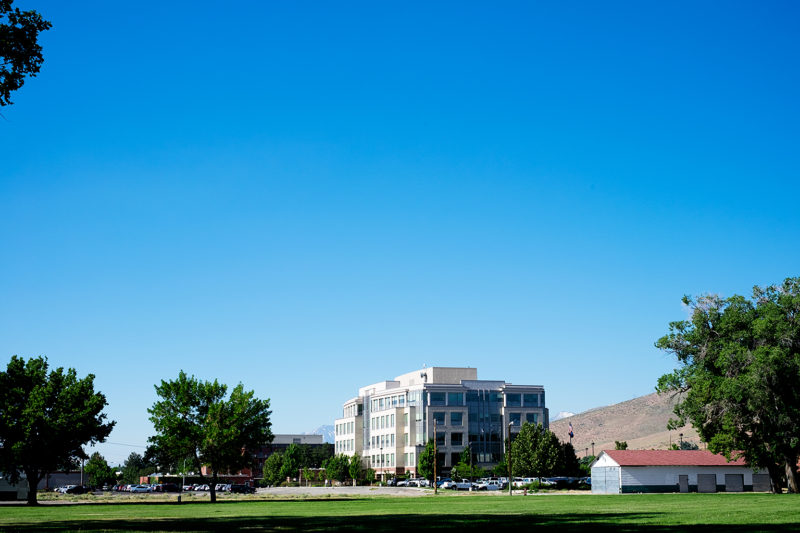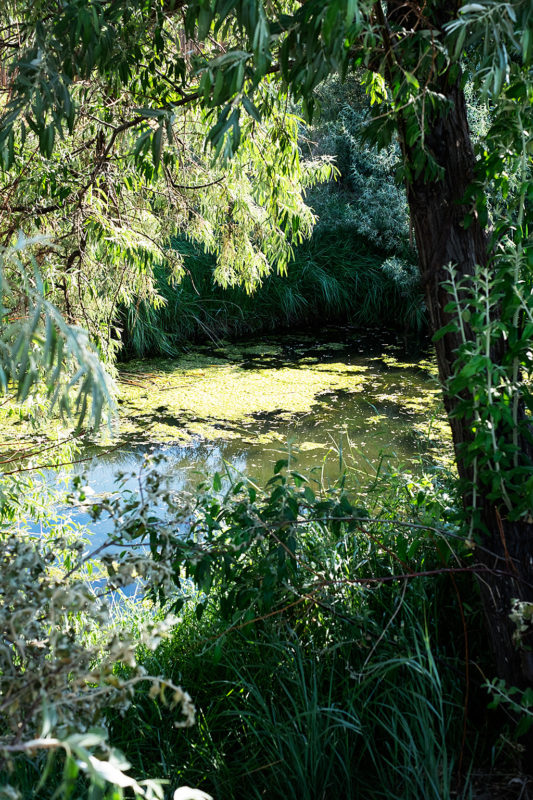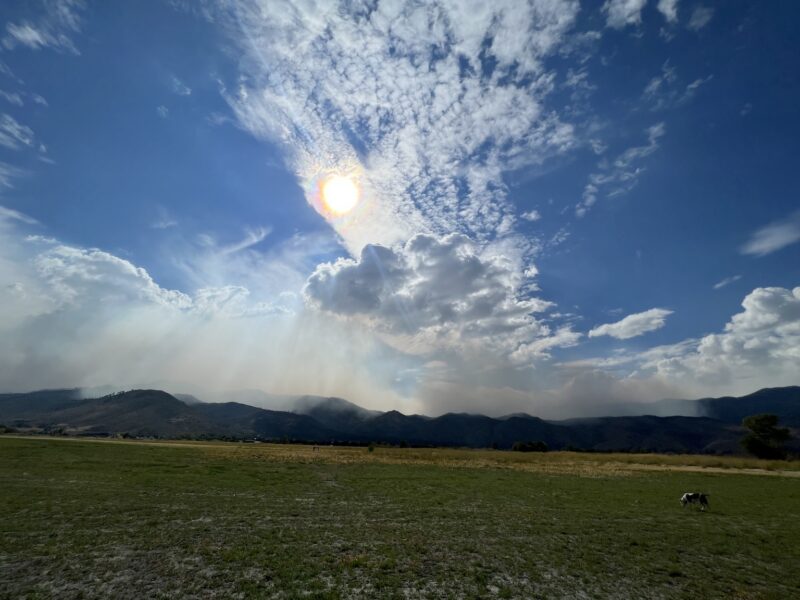
I intended to drive up to Washoe Lake SP Saturday evening to get out of the house. The Girl is always ready for an outing. I thought I might buy a cheeseburger from DQ and a Blizzard, share both with her, and then play a little radio.
But, the Mosquito Fire had different plans for me. The cheeseburger and Blizzard were good and both made the Girl happy. But when we drove over the summit into Washoe Valley, I knew the outing was done. I exited I-580 at Bellevue Road and could not see the lake for the smoke. So, I turned around and drove home.
When I rose Sunday morning, the air was much clearer. So after getting a bite and a coffee, The Girl and I headed north to Washoe Lake. The temperature was much cooler than it had been for weeks. The walk was nice. But on the way back I realized I left two liters of water on the counter at home.
So we drove over the the east side of the lake, where there is a fuel depot and convenience store. I bought a couple bottles of water and a bag of beef jerky. Then we were back off to the operating area.
I decided to erect a SOTAbeams Bandsprnger that was in my inventory. I have a number of end-fed random wire antennas in my kit that I built. So this unit languished. But I wrote a few weeks about about the abortive attempt of a good friend to deploy his Bandspringer. So I thought I would set my instance up and test it.
Aside: The Bandspringer is an end-fed random wire (EFRW) antenna. That is, it is not a resonant antenna. Therefore, it presents an impedance of around 250-350 ohms at the feedpoint, an impedance that the antenna matching unit in many transceivers can accommodate (up to a SWR of about 3:1).
In contrast, and end-fed half wave (EFHW) antenna is a resonant antenna that will present a low SWR at its fundamental and multiples of the fundamental frequency. It will present a very high impedance at the feedpoint, something on the order of 2,500 ohms or more. Therefore, some kind of matching transformer is required at the feedpoint to bring the impedance down to a value the internal (or external) antenna matching unit of the transceiver can match.
The two antenna types are quite different, even if they appear to be similar.
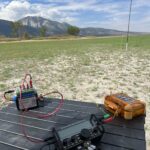
I staked the distal end of the radiating wire and walked back to the operating point. I staked the radiator at a point about three feet upstream from the feed point to provide some strain relief at the radio should the wind blow.
It was then a matter of connecting the antenna to the radio, affixing the key to the radio, and connecting a power supply.
Total setup time was about 15 minutes. I checked in to the 40m Noontime Net with ten watts phone and then played around hunting other activators. They were not hearing me.
I decided that meant I should just run a frequency. So I gave The Girl some water and got some for myself. I found a jar of honey-roasted peanuts in the rig and had a snack (The Girl begged some peanuts as well). I picked a frequency on the 20m band and spotted myself.
After a few calls I started working callers. I had a couple of small pile-ups that were fun to work. When the responses stopped coming, I switched to the 17m band and worked a few more. I decided to try the 15m band, but when I listened there the noise level was S5 (that is pretty high for a rural area).
I went back to the 20m band and worked a few more stations. Then I shut down the radio and just sat back for a moment.
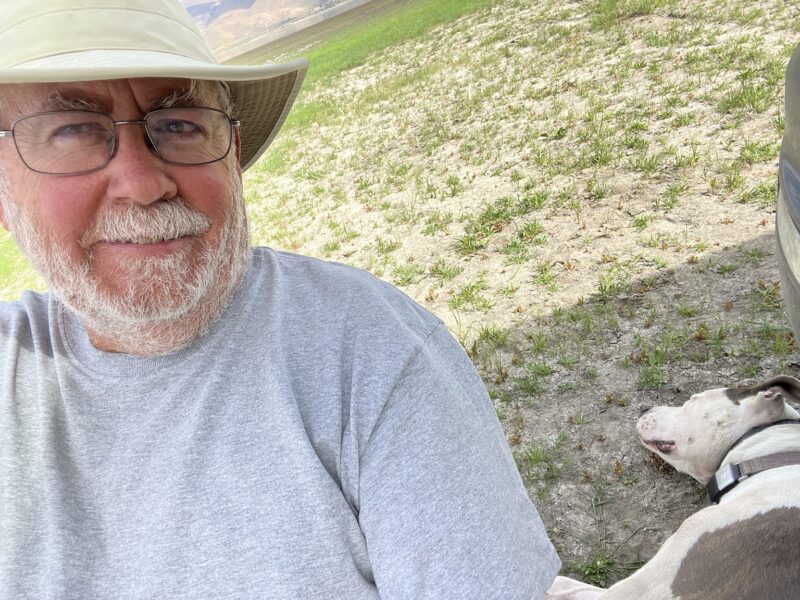
About that time my buddy Dick called. “Man, I’ve been busting my ass to get this done while you were still activating so I could test it with you!. Then I saw you go QRT [cease operations] and said ‘Aw man!’.”
“I can turn the radio back on.” I did, but someone had occupied the frequency I was using on 20m. So I tuned a few kiloHertz to the left and found an open frequency. “Call me on 14.063MHz. I’m listening.”
I heard his call loud and clear, so I responded and we made the exchange. Then we chatted a moment (in Morse Code).
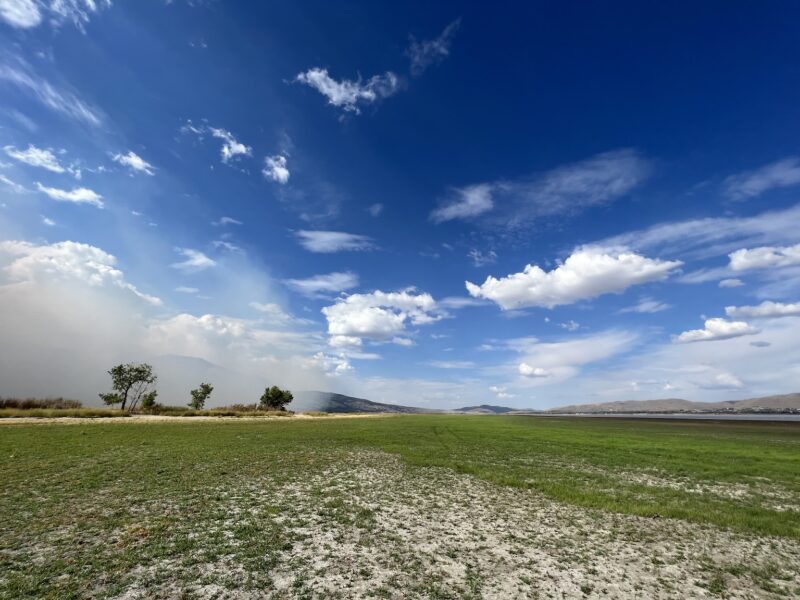
I then looked up from the radio and noticed smoke. What I saw was the first image at the top of this entry.
“Wow! You should see the smoke rolling over the mountains. Something must have changed. It’s time for me to put things away. I have time, but the smoke is coming and I don’t want to have to be in it.”
We continued chatting while I put everything away. That took me about 15 minutes. The smoke continued to increase as time passed.
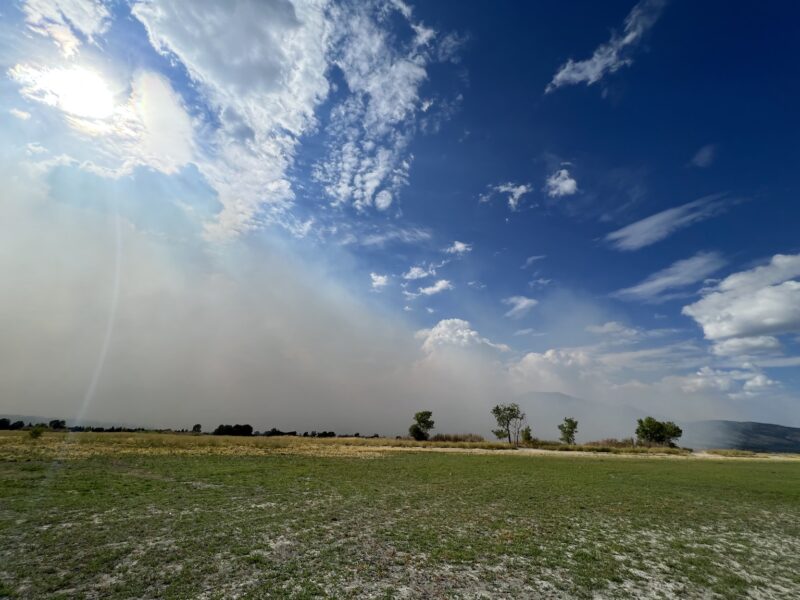
Slide Mountain was invisible in the smoke as I put the last of my equipment in the back of the rig. I gave Sera a bit more water, then put her in the rig. I then stepped around the rig to look to the south.
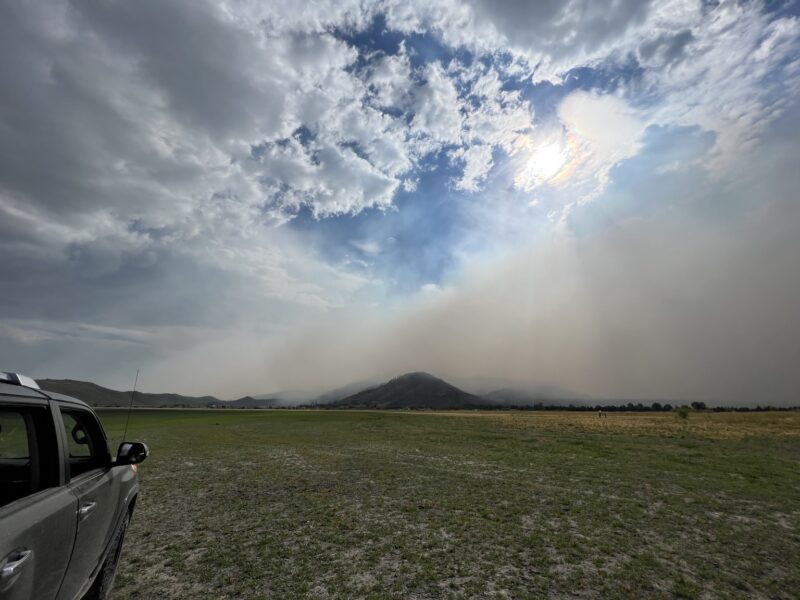
What I saw was smoke rolling over I-580 and through the gap between the Sierra and the Virginia Range, into Carson City. I put myself into the 4Runner, started the engine, glanced around one last time to be sure nothing was left behind, and started the A/C. We headed west along the trail to I-580. As we approached the east end of Bellevue Road, the next (and final) image is what I saw.
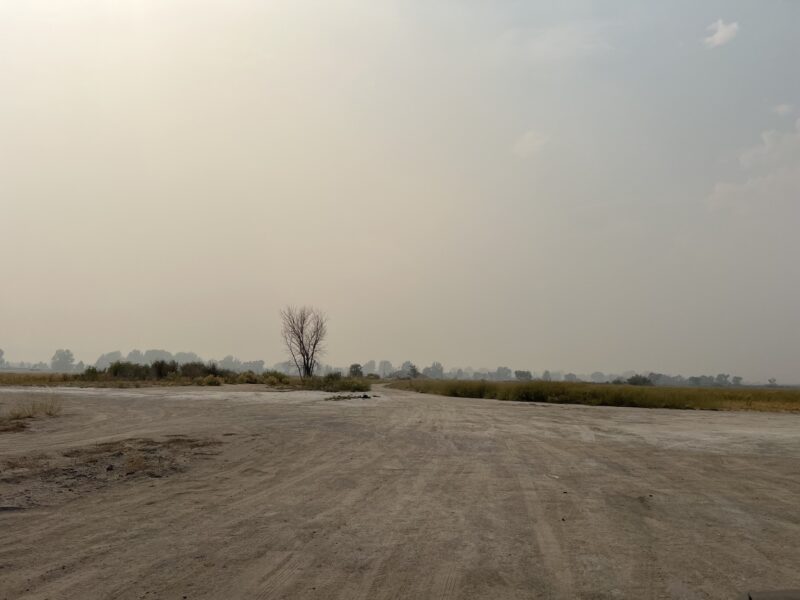
The smoke front obliterated the view of the highway! I was certainly happy to be in the rig and headed home.
I said my goodbyes and drove on. When I crossed the summit into Carson City, the smoke front bisected the city from the northwest to the southeast, intersecting the mountains at the north end of the Prison Hill Complex.
I was glad to get home, but also glad to have gone out.
As always, I have a few lessons learnt.
- Always check that I have water in the rig. I got distracted and failed to check. It was not a catastrophic failure, but an error nonetheless.
- The Bandspringer is just another end-fed random wire antenna. It is just like others I built as I experimented. It is well-built, but the instructions could use some work. I do not need it in my inventory.
- I was not able to get an impedance match for the 30m band. I suspect that I had some capacitive coupling between the radiator and counterpoise, probably because both were near the top of my small camp table, which is made of aluminum.
- End-fed random wire antennas can be affixed directly to the radio output *if* the radio has a good antenna matching unit built in. If not, then an external antenna matching unit is needed with a sufficient range to match a wide range of impedance presented by the antenna.
- The Elecraft matching units are very good and will match a wide range of feed point impedances.
- It was good that I noticed the smoke. It would have been unhealthy to be in that smoke very long without a mask.
- I keep a N95 mask in my pack for just such a case. Unfortunately, along with the water, I left my pack at home. Hmmm…
- Regardless of the smoke, it was a good day. After a number of weekends of too much heat, a day in the 80Fs was nice.
